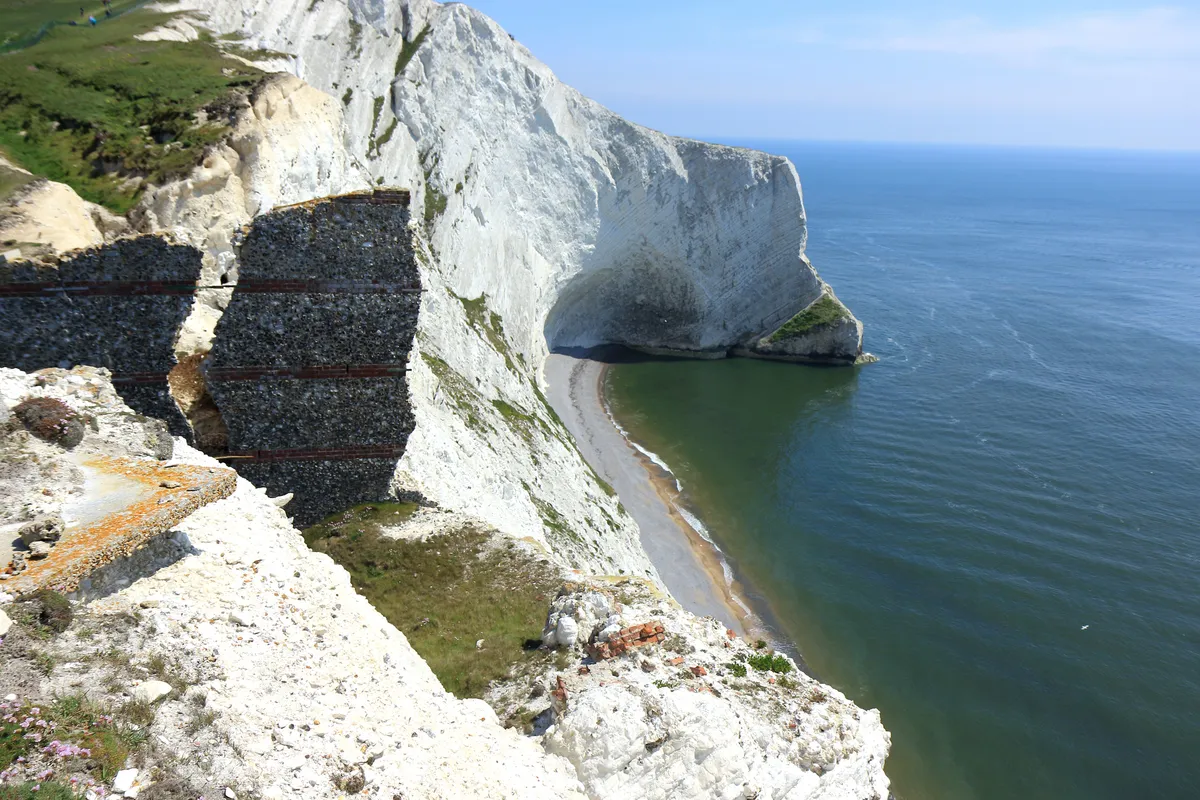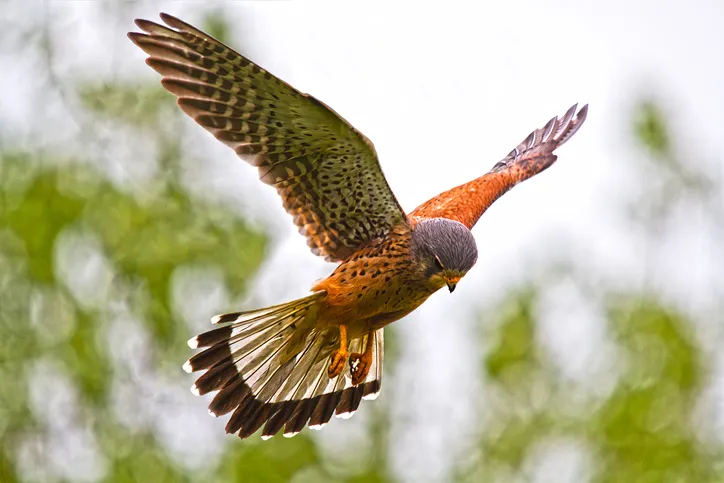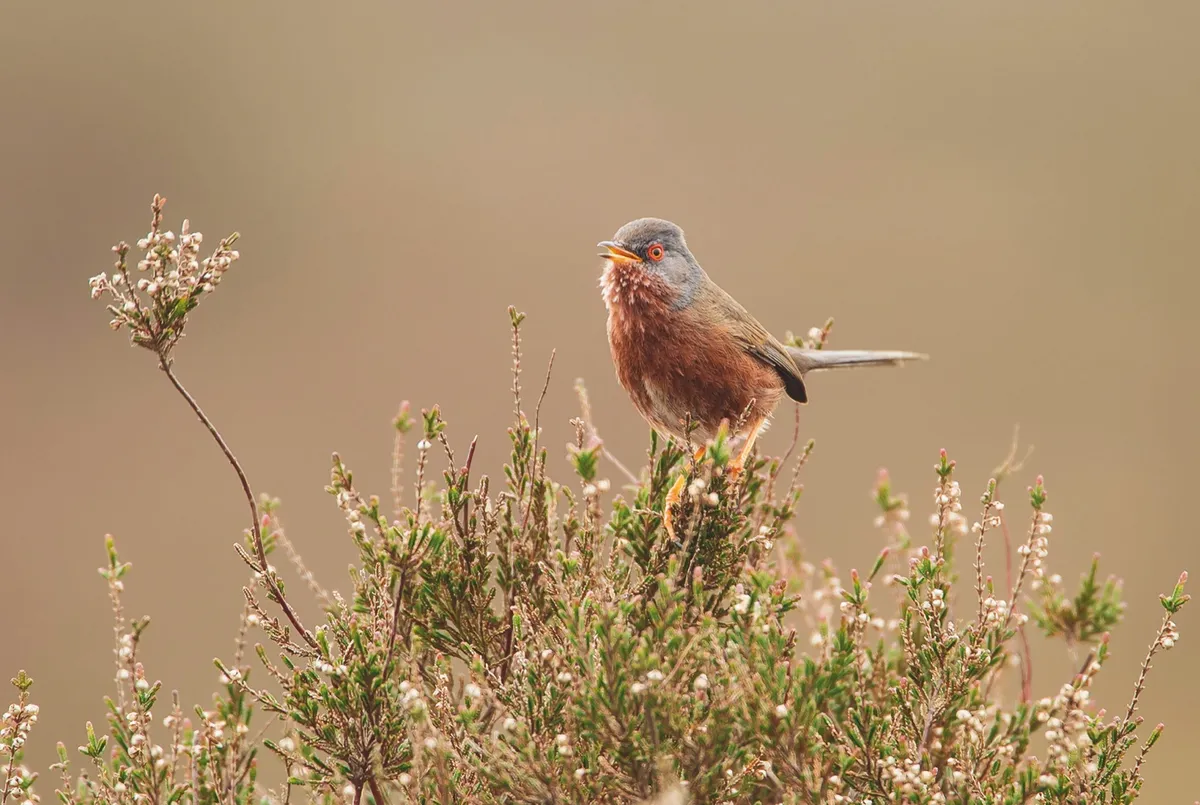Spot birds, butterflies and the famous Needles on a day out at Tennyson Down.
Tennyson Down is a life-enhancing place, where you can enjoy striding over the springy, flower-rich turf in the footsteps of poet Alfred, Lord Tennyson (1809-1892).
Tennyson, who was Poet Laureate during the reign of Queen Victoria, lived nearby and found peace and inspiration in the downland landscape.

Walking westwards, accompanied by the hedgerow chatter of whitethroats, chaffinches and yellowhammers, you’ll find your pace quicken as you sense the gathering climax of the western edge of the Isle of Wight, tumbling into Scratchell’s Bay and the Needles.
Further south and east, the downs melt into Freshwater Bay, and the cliffs change from chalk to clays and sandstone. Always keep an eye on the sky – you might spot a lonely peregrine hunting for cliff-nesting birds.

1. Tennyson Monument
Erected in 1892, this granite monument, 147m (482ft) above sea level, commemorates the Poet Laureate, who lived at nearby Farringford House in Freshwater in the mid-19th century. It’s a good vantage point for gazing at the sea and perhaps spotting a common seal, a common dolphin or even, if you’re lucky, a bottlenose dolphin – a small population is known to spend time in the western side of the English Channel.
2. Kestrels

Keep an eye out for this small falcon’s distinctive silhouette as it hovers over its favoured grassland habitat landscape looking for mice and voles. When it spots prey, it drops closer to the ground before plunging suddenly into the grass. Stay still and wait a few moments until the bird takes to the air, then look to see if it was successful – if so, it will be carrying a rodent in its talons.
4. Adonis blue
Huge populations of this butterfly can be found on the south-facing slopes of the western end of the Isle of Wight, with broods peaking in early June. The butterfly favours warm, sheltered spots, and is a classic species of chalk downland. Look for salad burnet, kidney vetch and horseshoe vetch, which provide nectar for the butterfly.
3. Dartford Warbler

A rare bird in Britain, the Dartford warbler has increased its range in recent years due to milder winters (save that of 2009-10) but a glimpse of its bold red eye and ruddy breast is still noteworthy. The male likes to sing from the tops of gorse bushes but his scratchy churr doesn’t quite match his striking plumage.
5. Hoary stock
The distinctive, sweet-scented purple flower can be seen at Freshwater Cliff, typically climbing on the chalk cliffs or scrambling along the roads. The flower is only found on the island and on cliffs across the sea near Brighton. Freshwater Cliff is a superb vantage point from which to drink in the adjacent Tennyson Down, and where you also have a good chance of spotting fulmars, peregrines and ravens.
6. The Needles
The chalk stacks of the Needles protrude into the sea and provide a breathtaking full stop to the chalk ridge that runs through the Isle of Wight. Not surprisingly, these shards of land are notorious for shipwrecks, hence the lighthouse. The wildlife here can be thrilling, with herring gulls and fulmars flying backwards in the teeth of the sea winds.